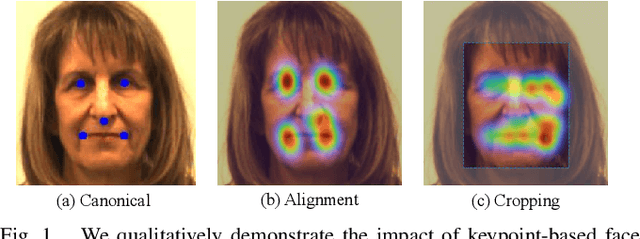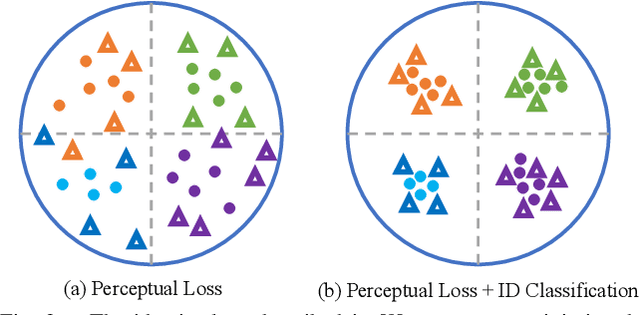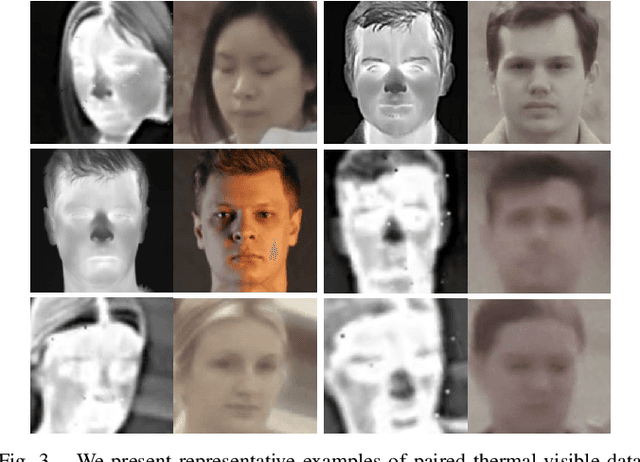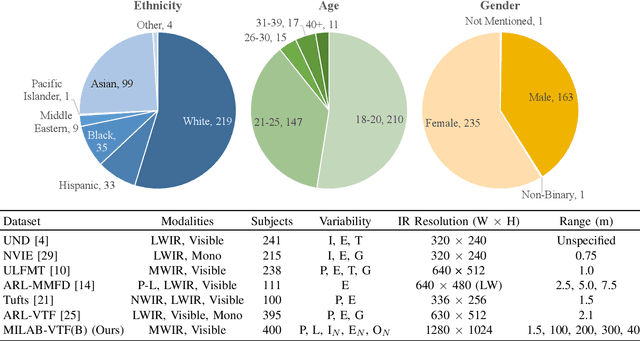A Synthesis-Based Approach for Thermal-to-Visible Face Verification
Paper and Code
Aug 21, 2021



In recent years, visible-spectrum face verification systems have been shown to match expert forensic examiner recognition performance. However, such systems are ineffective in low-light and nighttime conditions. Thermal face imagery, which captures body heat emissions, effectively augments the visible spectrum, capturing discriminative facial features in scenes with limited illumination. Due to the increased cost and difficulty of obtaining diverse, paired thermal and visible spectrum datasets, algorithms and large-scale benchmarks for low-light recognition are limited. This paper presents an algorithm that achieves state-of-the-art performance on both the ARL-VTF and TUFTS multi-spectral face datasets. Importantly, we study the impact of face alignment, pixel-level correspondence, and identity classification with label smoothing for multi-spectral face synthesis and verification. We show that our proposed method is widely applicable, robust, and highly effective. In addition, we show that the proposed method significantly outperforms face frontalization methods on profile-to-frontal verification. Finally, we present MILAB-VTF(B), a challenging multi-spectral face dataset that is composed of paired thermal and visible videos. To the best of our knowledge, with face data from 400 subjects, this dataset represents the most extensive collection of publicly available indoor and long-range outdoor thermal-visible face imagery. Lastly, we show that our end-to-end thermal-to-visible face verification system provides strong performance on the MILAB-VTF(B) dataset.
 Add to Chrome
Add to Chrome Add to Firefox
Add to Firefox Add to Edge
Add to Edge